Simplifying Financial Confusion
LEARN CASH FLOW HACKING TO REACH FINANCIAL FREEDOM
Used by 90% of millionaires to reach their financial goals 4x faster

Achieve Financial Freedom Through Cash Flow Hacking

Increase Your Lifestyle While You Build Your Wealth
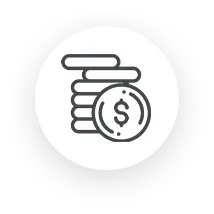
Position Yourself to Thrive in Market Downturn
YOU SHOULD NOT FEEL OUT OF CONTROL ABOUT YOUR FINANCIAL STRATEGY

Have easy access to your money in case of emergencies and opportunities

Use the investment strategy 90% of millionaires use

You deserve a clear plan to consistently grow your money and avoid market uncertainty

Have a guide and advisor that has your best interest in mind

Do not overpay in taxes

Stop guessing at the best vehicles to protect and grow your money
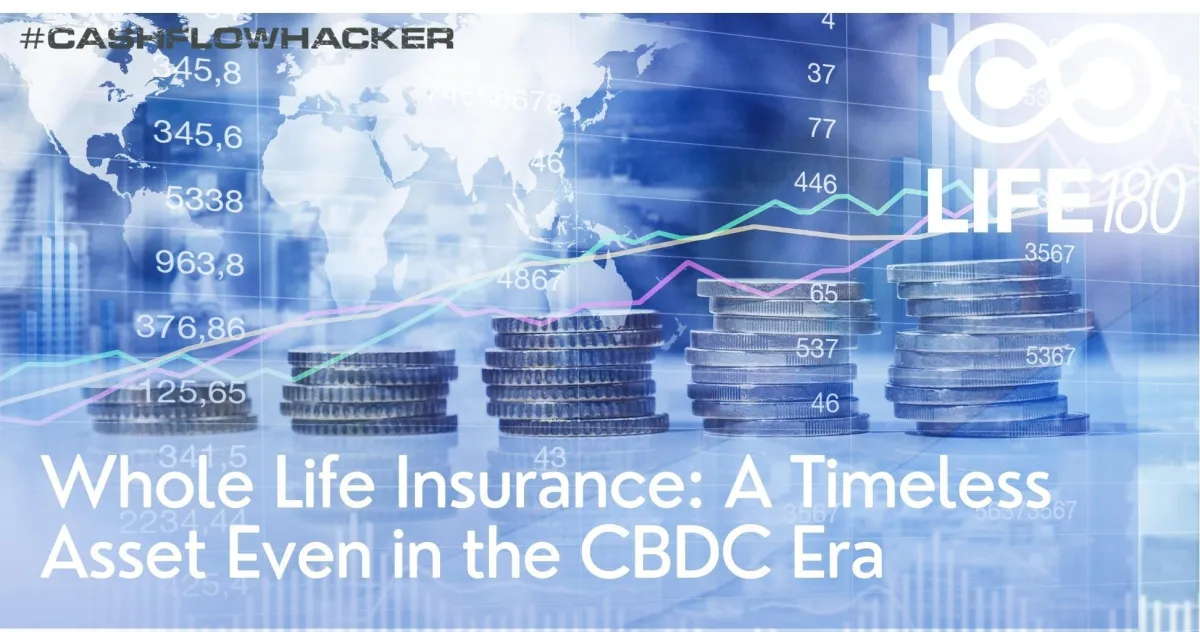
Whole Life Insurance Will Outlast The US Dollar | CBDC Coming?
The article below is a written adaptation of the video available on the Life180 YouTube channel.
Many people are concerned about the devaluation of the US dollar, given the staggering $33 trillion debt, nearly $200 trillion in unfunded liabilities, and the multi-trillion-dollar annual deficit. The situation seems to be deteriorating, exacerbated by rising inflation rates that remain uncertain and far from under control. Adding to the uncertainty are the increasing interest rates and questions surrounding Jerome Powell's leadership at the Federal Reserve.
These factors have left many individuals anxious about the future, particularly regarding the development of central bank digital currencies (CBDCs) and the possibility of losing the US dollar's world reserve currency status. As a result, gold enthusiasts and cryptocurrency advocates have genuine concerns about the nation's monetary and currency standing.
So, the pressing question arises: If you must keep your funds in fiat currency, particularly US dollars, what is the optimal approach? I have long contended that whole life insurance provides the best means to store your liquid fiat currency, ensuring access during emergencies and opportunities while facilitating wealth creation. There are numerous compelling reasons for this perspective.
I recently came across a video from the ITM team expressing concerns about whole life insurance, and it's evident that they may not fully grasp its advantages. You can watch my reaction video here.
The Optimal Time for Whole Life Insurance Investment
I want to discuss why now is the perfect time to consider putting your money into a whole life insurance policy. Whether it's for your emergency fund, opportunity fund, or any funds you need to keep in fiat currency, this article will explain why I believe this is the best course of action.
In today's financial landscape, it's not realistic to think you can go through life without holding some money in fiat currency. While I understand that this approach doesn't suit everyone, I firmly believe in aligning your financial choices with your values and beliefs.
Now, let's address a significant issue I've noticed. Many crypto and gold enthusiasts suggest putting money into an indexed universal life (IUL) policy. However, I'll demonstrate why this approach contradicts your values and beliefs. If you're into crypto or gold, whole life insurance is the better choice. When you choose an IUL, your money remains in fiat currency and is exposed to market risks tied to the US dollar. Surprisingly, whole life insurance provides some insulation against these challenges.
The History of Whole Life Insurance
Now, let's delve into the topic. Before we do, let's take a step back and consider some historical context. Understanding the history of whole life insurance is crucial. I often find myself comparing whole life insurance to index universal life insurance because, let's face it, there's a plethora of marketing focused on index universal life these days.
I used to be a strong proponent of index universal life insurance. However, I've come to realize that it's one of the riskiest and most misunderstood financial products out there. In fact, I'm currently working on a book titled 'IUL Exposed' to shed light on the truth about what might be the most misrepresented product in the history of personal finance. Stay tuned for its release!.
It's crucial to consider the problems your money aims to solve when deciding where to invest it. The primary role of life insurance companies is to preserve the purchasing power of your money and manage your financial risk. This historical perspective is essential to grasp, and I want to delve into it because it's critical. My passion for this subject stems from the fact that IUL companies have essentially appropriated this history while distorting the concept to suit their interests. So, let's explore the history of whole life insurance.
Origins of Whole Life Insurance and the Free Banking Era (1837-1862)
Whole life insurance was created in the early 1840s when several companies started to emerge in 1842, popularizing the concept of participating whole life insurance policies.
When I emphasize aligning our money with our values and beliefs, especially in today's climate of concerns over the dollar's devaluation and potential shifts in its world reserve currency status, it's because I advocate letting life insurance companies manage our financial risks. Why do I say this? Because they have a rich history of doing just that.
In our current economic climate, it's natural to be worried. However, consider the period from 1837 to 1862 known as the free banking era. During this era, the U.S. experienced different versions of its currency, and 1842 falls within this timeline. The currency at that time wasn't even the U.S. dollar; it was something entirely different.
What I'm about to reveal in this educational article is how whole life insurance companies have thrived through three different versions of currencies. They have never missed paying dividends, nor have their clients suffered because their core mission is to manage risk. These companies handle vast sums of money, managing risk for some of the world's most successful persons.
By the end of this article, you will understand why a properly designed whole life insurance policy, particularly one from a participating mutual company, should be where you consider keeping your funds, especially if you believe in cryptocurrencies or gold and want a secure alternative to traditional banking.
Let's take a step back in history to a time when life insurance companies were unwavering in their commitment. These companies consistently paid dividends every single year, and it's worth noting that this period coincided with what historians refer to as the “free banking era”. This era, spanning approximately 20 years, was marked by considerable uncertainty, an abundance of opportunistic individuals engaging in scams, and a general lack of financial stability.
Despite the chaos of the free banking era, life insurance companies emerged as pillars of reliability and assurance. While they didn't operate within the traditional banking system, they played a pivotal role in stabilizing the economic landscape. This was particularly beneficial for the affluent people of that time who sought a secure sanctuary for their financial assets.
Now, let's pivot to a question that often arises today: Why have generations of prosperous individuals chosen life insurance as a fundamental tool for amassing wealth? To answer this question, we must explore the historical context. During the tumultuous years from 1837 to 1862, when the free banking era was in full swing and life insurance companies began to flourish, the wealthy elite recognized that these companies provided a much-needed shelter from the storm of uncertainty.
(1863)The Civil War's Impact: The National Banking Act and a Unified National Currency
In 1863, a pivotal moment in American history occurred with the enactment of the National Banking Act. This significant development coincided with the tumultuous era of the Civil War, a time marked by the presence of President Abraham Lincoln, whose tragic assassination remains etched in our national memory. The Civil War represented a period of unprecedented turmoil in the United States, surpassing any other challenges the nation had faced since its inception.
While contemporary concerns may be pressing, it is difficult to fathom a scenario more dire than the Civil War. If one believes that our current circumstances could deteriorate to the level of that historic conflict, exploring alternative investment options, such as the investment fund with ongoing property development and investments in the Dominican Republic, may be a prudent consideration.
Reflecting on the historical backdrop, it is essential to recognize that life insurance companies during the Civil War were relatively nascent, having been established for a mere two decades. These early companies operated with smaller reserve accounts and had not yet refined their strategies to the level seen in modern times. Nevertheless, they exhibited remarkable consistency by annually disbursing dividends, a tradition extending over 180 consecutive years.
This enduring commitment to paying dividends should allay any concerns about the ability of a participating whole life insurance company to meet its financial obligations. It is crucial to emphasize that this historical precedent pertains specifically to participating whole life insurance companies, distinguishing them from Indexed Universal Life (IUL) policies.
The National Banking Act emerged as a response to the economic upheaval caused by the Civil War. Although this tumultuous period had profound and enduring effects on the nation's well-being, including economic uncertainty and disruptions, life insurance played a pivotal role in providing stability. The continued payment of dividends by life insurance companies during the Civil War underscores their resilience and commitment to their policyholders.
While the Civil War certainly took a toll on productivity, life insurance remained a cornerstone of financial stability during those challenging times. The careful pricing strategies employed by actuaries ensured that life insurance continued to fulfill its vital role, even amid the turmoil of the era.
Starting in 1863 with the enactment of the National Banking Act, life insurance companies found themselves operating within the framework of the second currency regime in the United States. The first currency era was ushered in by the Free Banking Act, which preceded the National Banking Act. This second phase persisted until the advent of the third currency regime, marked by the Federal Reserve Act.
While it's convenient to encapsulate this history within three currency phases, it's essential to acknowledge that contemporary concerns, such as the emergence of Central Bank Digital Currencies (CBDCs) and the potential loss of the world's reserve currency status, echo historical patterns. History has shown that transformations in the global financial landscape are cyclical and often linked to significant geopolitical events.
For instance, let's revisit the mid-20th century. In the 1930s, the U.S. government confiscated private gold holdings, a pivotal step during a period of economic uncertainty. This move set the stage for the Bretton Woods Conference in 1944, where the United States was bestowed with the world's reserve currency status. This designation was substantiated by the vast gold reserves stored at Fort Knox. Consequently, the U.S. ascended to become a dominant global power.
However, this era was not without its challenges, marked by events like World War II and the Vietnam War, which strained the U.S. economy and led to inflation concerns. Eventually, in 1971, faced with the looming threat of default, President Richard Nixon delivered a historic address announcing the nation's departure from the gold standard. This momentous decision effectively marked the end of the Bretton Woods system.
In the decades since, the trajectory of inflation and asset appreciation has been heavily influenced by various economic factors, including monetary policy. Concerns about hyperinflation, which have gained traction in recent discussions, reflect apprehensions about the government's capacity to manipulate economic variables.
In sum, the cyclical nature of financial transformations throughout history underscores the importance of understanding past patterns and their relevance to contemporary financial landscapes. While concerns about the changing global monetary landscape persist, history reminds us that adaptability and a nuanced perspective are key to navigating these shifts successfully.
The Federal Reserve Act In 1913 - And WHY Whole Life Is Used By Wealthy
Let's delve into the year 1913 and understand its pivotal significance, particularly in relation to the utilization of whole life insurance. At the core of this historical moment is the creation of the Federal Reserve, a topic thoroughly explored in the extensive tome, “The Creature from Jekyll Island”, penned by G. Edward Griffin.
This weighty book, spanning over 600 pages, delves into the origins of the Federal Reserve, a subject that is integral to comprehending why whole life insurance gained prominence during this era. The narrative unfolds before 1913, with discussions and deliberations commencing in the years leading up to this milestone.
The Federal Reserve, despite its name, is neither federal nor primarily designed as a reserve. Rather, it emerged as a result of influential figures in the banking world, led by J.P. Morgan and other banking elites forming what one might consider a banking cartel. Their objective was to exert control over the nation's monetary system, essentially privatizing it.
In essence, the Federal Reserve introduced a fiat currency system with an elastic currency. This allowed for the manipulation of interest rates and the printing of money, which could be injected into circulation or withdrawn as deemed necessary. This approach was touted as a means to moderate extreme highs and lows in the economy, thereby mitigating the recurring boom-and-bust cycles that had plagued the nation.
The promise of increased economic stability was a compelling argument presented by proponents of the Federal Reserve system. This system was framed as a solution to address the volatile economic fluctuations that had characterized the United States.
In light of this historical context, the emergence and widespread adoption of whole life insurance in 1913 takes on a new dimension. It underscores the need for individuals and families to safeguard their financial well-being amidst a shifting economic landscape marked by the establishment of the Federal Reserve. Whole life insurance emerged as a financial tool that offered stability and security during these uncertain times.
Before of 1913, an intriguing financial strategy was in vogue among the wealthiest individuals of the time. It's a little-known fact that the most prosperous members of society were choosing to safeguard their wealth by entrusting it to whole life insurance policies. These policies emerged as the premier destination for capital accumulation due to their demonstrated stability and reliability. The defining feature was the annual payment of dividends, an unbroken tradition across all participating mutually held whole life insurance companies. Not a single one had faltered or failed during this era.
So, as the year 1913 rolled around and ushered in the creation of banks, a paradox unfolded. On one hand, the banks were urging the public to deposit their money within their vaults, assuring them it was the safest place for their capital. On the other hand, the wealthiest individuals, including politicians, bankers, and corporate magnates, quietly continued to preserve their fortunes in whole life insurance policies.
Intriguingly, these individuals benefited from the tax advantages and other perks associated with these policies, even after the establishment of the Federal Reserve Act in 1913. The Federal Reserve Act was intended to reshape the financial landscape, but it also had to accommodate the pre-existing financial strategies employed by the nation's financial elite, who had been quietly accumulating wealth within whole life insurance policies for years. This unexpected revelation underscores the enduring appeal and enduring benefits of whole life insurance as a vehicle for wealth preservation.
This well-kept secret persisted, known only to the most prosperous individuals in the world who continued to safeguard their wealth within whole life insurance policies. Their commitment to this strategy stemmed from its historical success and the uninterrupted tradition of receiving annual dividends.
However, over the decades following the inception of the Federal Reserve Act in 1913, this once-clear narrative became increasingly obscured. As time passed and the origin story of this strategy receded further into history, its details grew hazy. What has compounded this issue is the manipulation of the narrative by financial institutions. They have succeeded in convincing the general public to deposit their money in traditional banks while discreetly pursuing alternative strategies for themselves. In essence, they are advocating one thing while practicing another.
The Secret Keepers: Banks, Corporations, and Politicians Dominate Whole Life Holdings
In fact, if you look around, the largest holders of Whole Life are banks, corporations, and politicians. So Barry Dyke, “Pirates of Manhattan”, I want everybody to read that book, it's a long one, go to BarryJamesDyke.com. Amazing book, that book is a valuable resource, and it's worth surpasses its price tag. I'd like to emphasize this point. There's a noteworthy statistic floating around (though the source eludes me presently) that suggests around 80% of all the cash value held in whole life insurance policies belongs to banks and corporations. This underscores the significance of these policies for institutions of this stature.
Indeed, Barry Dyke and his research uncovered an astonishing revelation. Among those examined, 54 politicians and Federal Reserve personnel have chosen to invest in participating mutually held whole life insurance companies. This knowledge stems from publicly available income disclosures mandated for people running for public office. This striking revelation serves as compelling evidence that some of the most accomplished and prosperous individuals globally have embraced these financial tactics.
For instance, Ben Bernanke, who served as the Federal Reserve Chairman during the Great Recession, entrusted his wealth to whole life insurance policies. An intriguing fact is that even the Federal Reserve, the very institution responsible for managing the country's monetary policy, moved its 401k plan out of the stock markets before the economic downturn and entrusted it to life insurance companies. While it's not about promoting conspiracy theories, this accumulating evidence underscores the significance of these strategies for financial stability and success.
CBDC, 401K’s and IUL vs Whole Life
In 1971, we abandoned the gold standard, which contributed to the inflation we face today in 2023. Many people are concerned about the arrival of CBDC (Central Bank Digital Currency). And here's the issue: if you're someone worried about this, if you're passionate about gold and cryptocurrencies, you'll want to position yourself to thrive and seize all the opportunities arising amidst this uncertainty. Because, let's not kid ourselves, an avalanche of opportunities is on the horizon due to the uncertainty that lies ahead. You have two choices: either you become a prosperous beneficiary of the opportunities created through your preparation for these moments, or you face financial carnage in the process.
My challenge to you is this: many people share these concerns and facts I've mentioned. I've seen influencers with a large following on TikTok, Instagram, and YouTube promoting IUL (Indexed Universal Life Insurance) as an alternative to the 401(k) plan because they want to take their money out of the government's hands. Remember, when you put your money in a 401(k) plan, you're handing it over to the government because you're deferring tax payments to a future date.
Right now, our debt is at 32 trillion, and our unfunded liabilities are nearing 200 trillion. Taxes are currently at their lowest levels, ranging from approximately 35% to 39% for the top marginal rate, and as low as 10%. This is the lowest they've ever been on a long-term scale, and we're facing the highest debt and the most uncertainty. Therefore, it's highly likely that taxes will increase. So why would you defer taxes right now by putting money in a 401(k), essentially giving it to the government and allowing them to raise your taxes, thereby reducing your money? It made sense to contribute to a 401(k) back in 1980 when tax rates were, let's say, 70% at the top rate. You could defer taxes at a high rate and then take distributions at a lower rate, making it a sensible strategy. However, that's not the current environment we're living in.
So, the idea behind the IUL is that it's like a rich person's Roth, because it offers various advantages. There's a lot more to understand about how IULs work, and I have numerous videos and resources explaining this. I also have a book, "IUL Exposed", coming out, and a new masterclass in the works. Make sure to subscribe and hit the notification bell on the LIFE180 YouTube Channel to stay informed, as I'll be releasing plenty of educational content on this topic.
But it's genuinely frustrating for me to witness influencers and others with these mindsets and beliefs promoting this. What they're essentially doing is shifting from the government to the insurance company. In the case of an IUL, the insurance company has control. Conversely, with a whole life insurance policy, you're a partner with the insurance company, and you benefit from its success. With an IUL, you're essentially a profit center for the insurance company. Let's be clear about it.
Remember, an IUL is just a new version of traditional universal life insurance. Traditional UL was introduced in 1980 and turned out to be a colossal failure. Many people had lapsed policies and lost a considerable amount of money. All IUL did was take that fixed credit rating and use it to purchase options, which are not designed to generate massive returns. There's nothing creative or exceptional about it; it's essentially a basic call option, used primarily as a hedging strategy. It won't deliver the significant returns it's often marketed to provide, and it's one of the most misrepresented financial products out there.
Moreover, it lacks the comprehensive benefits I've been discussing here. It doesn't offer the control, liquidity, or guarantees you'd get with a properly structured whole life insurance policy. What irks me the most is when agents claim that the Rockefellers and Rothschilds used IUL. The truth is, IUL didn't even exist until 1997, and it's essentially a failing financial experiment.
And so, when you choose to go this route, all you're essentially doing is reinvesting your money into the fiat system. You take the guaranteed credits you would receive and invest them in options, placing your money in a market or investment vehicle that you may not fully comprehend and certainly can't control. My belief is that the best investment you can make is in yourself. We should be acquiring hard assets, not taking risks within an insurance company. Insurance companies excel at preserving the purchasing power of our capital and managing risk. This is what they've been doing successfully for 180 years. So why would I want to meddle with a system that works?.
Because here's the thing, many people overlook this crucial point. When I opt for an IUL, essentially, I'm funneling my money straight into the stock market. What often eludes people's understanding is that a whole life insurance policy takes a different approach. Approximately 25% of the policy, or the general fund, is set aside for this purpose, while the remaining 75% is strategically invested in safer assets. These include treasury bonds, mortgage-backed securities, and top-notch corporate bonds, often boasting AAA ratings. While these investments may not have that flashy appeal, they deliver consistent and reliable returns, and this has been the tried-and-true approach of insurance companies for many years.
Now, the persons who express concerns about insurance companies being wiped out by hyperinflation often focus on the substantial allocation to treasuries within insurance company portfolios. However, it's crucial to adopt a strategy that positions you for success, regardless of the economic landscape. Yes, I share concerns about the devaluation of the dollar and the potential loss of the world's reserve currency status. But I also acknowledge that there's uncertainty, and nobody can predict the future with certainty.
We might be worrying about potential scenarios that never materialize. There's a possibility that the current system continues for several more decades. So, what's essential is to act wisely and not disregard the potential opportunities in the present environment. Currently, there's a chance that the US dollar could strengthen, and US bonds could perform exceptionally well. This could benefit insurance companies, especially the portion of their portfolio invested in these assets.
Therefore, it's critical not to overlook this aspect and instead leverage your fiat portfolio wisely. When you allocate your funds to a life insurance company, they manage it in a way that provides bond-like returns with the liquidity of a savings account. This strategy enables you to leverage the capital in your whole life policy to invest in tangible assets like real estate or ventures that align with your unique skills and abilities. For some, it might be cryptocurrency, while others may excel in different areas. The key is to invest where you have the expertise to generate positive returns.
I want to emphasize a critical aspect of whole life insurance that often gets overlooked and where IUL falls out of alignment. When you allocate your funds to a whole life insurance contract, you're essentially telling the insurance company to take that 25% portion of your investment and put it to work. Every insurance company does this slightly differently, but they have the flexibility to invest in various assets like cryptocurrencies, gold, and alternative investments. This is where they can generate returns.
When I talk about the life insurance company managing risk, this is precisely what I mean. They have a team of experts managing billions of dollars, and you can choose to let them handle the risk for you. Consider this: they've been doing it successfully for 180 years. They've navigated transitions of power, currency changes, and various economic scenarios while consistently paying dividends.
So, you can have faith that if a significant economic event occurs, the life insurance company will manage the risk of that 25% portion to potentially yield what we call an asymmetric return. For example, let's say they allocate 1% of their portfolio to cryptocurrencies, and the US dollar loses 99% of its value, but cryptocurrencies surge by 200 times in value, which is a plausible scenario. In this case, your investment remains intact and could grow significantly.
Guess what? Insurance companies are experts at managing risk within a whole life policy. They have a long history of navigating currency transitions and economic changes, and that's precisely what they're designed to do.
As history has shown, banks, corporations, and politicians have more of their wealth in these policies than in anything else. So, if there's one thing I'm sure of, it's that I want my money where these entities have theirs when things go south, you know, when the unexpected happens. That's why I advocate for having your money in a whole life policy.
But here's the thing, you need to understand why you're doing it, not just what you're doing. You need to be able to explain to yourself why having your money in this policy will help you become the person you need to be to achieve the life you desire, to reach your goals. If it's not doing that, whether it's crypto, gold, the stock market, a whole life policy, or an IUL, it's not in alignment with your values and beliefs, and you should explore other options.
So, that's my perspective on it. I don't know what else to add. I guess I'm done.
Well, anyway, it was a bit of a rant for me, a little frustrating, you know. I had a couple of significant conversations today where I saw people being exposed to IUL and being sold on it without a complete understanding. I really want to do something about this. I have a passion for exposing the truth about these matters and helping people make informed decisions.
I believe in the power that life insurance can have in people's lives right now. However, I also see the potential disaster it can cause if done through an IUL without a proper understanding of how it works. Because honestly, if you truly understood how IUL works, you'd likely choose a whole life policy every single time.
I sold IUL for four and a half years and even worked as a director of business development for one of the top IUL companies in the country. I bought into it hook, line, and sinker, believed it, and had to walk away from it when I learned what I did. So, I'm just trying to save people from potential financial harm, and sometimes it gets frustrating.
I've dedicated a lot of my life and energy to connecting with people, serving them, and helping this industry. Today was a bit of a public venting of my frustrations. I hope you found value or maybe some entertainment in it. If you have any comments, please leave them in the comment section below. And if you enjoyed this and want to hear more, be sure to follow my content.
Take care and see you next time.
HOW TO START TAKING CONTROL OF YOUR FINANCES BY MAXIMIZING YOUR CASH FLOW AND PROTECTING YOUR ASSETS

1. Schedule Your Free Clarity Call

2. Create a Free Customized Plan

3. Get Guide to Financial Success
GET YOUR FREE COPY TO STOP USING OUTDATED RETIREMENT STRATEGIES
Cash Flow Hacking teaches you to:
Protect Your Investments
Thrive in bad markets
Reach financial freedom faster
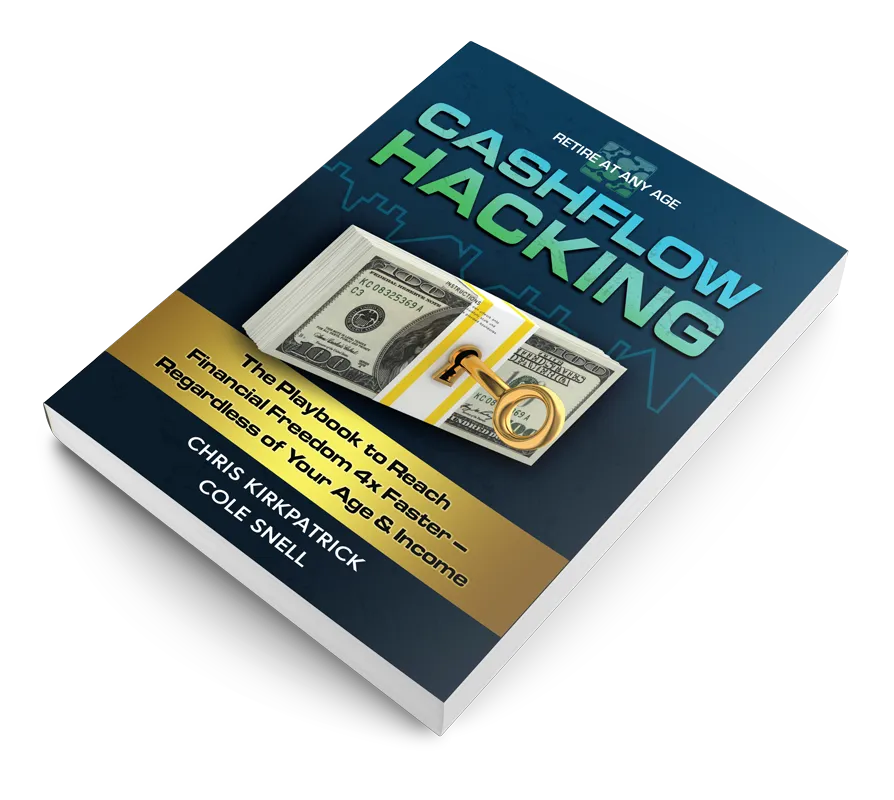
ARE YOU LOOKING FOR:
Cash Flow Hacking teaches you to:
Security to protect your money
Increased cash flow and lifestyle
Inflation protection
Financial certainty in all economic environments
A reduction in taxes
Safe and fast access to your money with no penalties
WHO IS THIS PROGRAM FOR?

People looking for an alternative
Are you looking for alternatives to Wall Street’s “buy and hold” strategy that takes 40 years with uncertain results? Our Cash Flow Hacking strategies provide you the building blocks to get started on the right foot

Passionate Entrepreneurs
Are you looking for a financial strategy that will take your best assets (you and your businesses) and multiply their potential? Our Cash Flow hacking strategies will teach you how to invest for the future without sacrificing building your business

Real Estate
Investors
Are you a real estate investor who is burned out from being a landlord or playing the fix-and-flip game? Our Cash Flow Hacking strategies will provide you with the system to create predictable wealth AND give you the freedom you are looking for.
YOU DESERVE PEACE OF MIND AND A PLAN THAT WILL PROTECT YOUR FAMILY AND GROW YOUR WEALTH
Today you need to be more savvy than ever if you try to go at it alone.
Losing money to inflation, taxes, and just poor investment strategies is leaving you frustrated, feeling out of control and not knowing where to turn. To add to the problem, the market is flooded with advisors who have outdated advice that does not place your best interests first, but instead focuses on charging you a fee that creates guaranteed cash flow for them.
NOT YOU
We believe this is wrong and that your security and best interests should be placed first. We believe you should be in a position where you control your money, your money doesn't control you. We understand because we talk with hardworking people everyday that are losing money in the markets based on old information and feel like they are guessing at the best course of action.
We created the Cash Flow Hacking plan to help you have security and control of your money to take advantage of life's opportunities because you deserve peace of mind with your wealth. The old way of planning for retirement of… Go to school Get a job & save as much as you can in your 401k and mutual funds...is broken.
You have been lied to. Think about it, where else in life does someone tell you that the most certain way to achieve your desired result is to take on more risk? The math just doesn't work, and the results are showing in our country and world. Did you know that 90% of millionaires in the United States have 1 asset in common?
Hint: it's not stocks or mutual funds (and no...it's not crypto) How much sense does it make for you to work hard, save money, reduce your current lifestyle (because that's what you are doing when you save for the future - taking money you could use on lifestyle today and delaying gratification to a future unknown time), and hope that whatever you are doing will work three to four decades from now? If you're thinking, "not much sense at all…", you are in the right place.
With over 50 years of experience on our team, we have worked with thousands of individuals and families to achieve financial freedom faster and with more predictability by helping them invest for Cash Flow.
How does the Cash Flow Hacking Plan work? 1. Take the Cash Flow Hacking Challenge 2. Complete the LIFE180 X-Ray and determine what your Freedom Number is 3. Work with a Cash Flow Hacking expert to provide you a customized plan
The customized Cash Flow Hacking plan will give you clarity on where you are now, where you want to go (and in what time frame), and what you need to do to get there predictably.
We value and commit to you: We believe you deserve the best financial education and guidance We believe financial decisions should not be rushed but be well thought out with a plan We believe you should be in control of your money We believe we earn your trust through time, education, and proper due diligence Without a proper plan and guidance, your money can be lost to taxes, inflation, and bad investments You deserve more with the most up-to-date strategies to mitigate your risk, control your money, and earn stable returns regardless of the market Schedule a call here to attain your LIFE180 Financial X-Ray now or get started with the Cash Flow Hacking Challenge for free.
I am interested in...